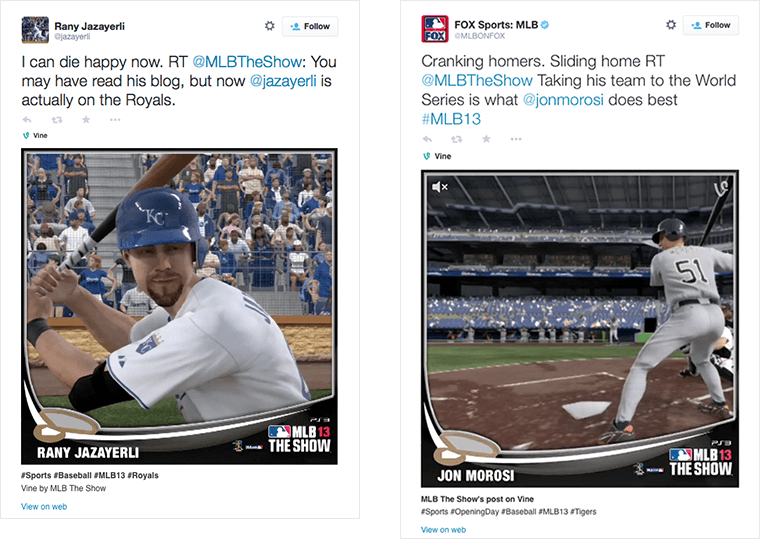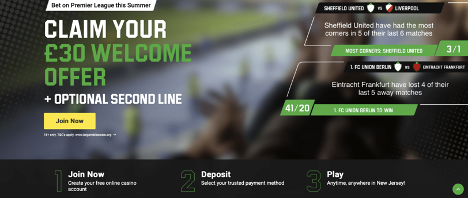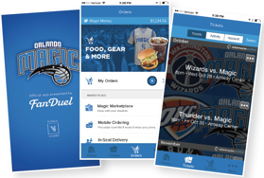Whistles blow (then are quickly sanitized), sneakers screech an ex-ballroom-parquet, and broadcasters emphatically argue a holding call from thousands of miles away, but sports are back.
As it has with many other industries, COVID has spurred innovation and creative problem solving this summer in the sports world, leading to the delivery of some atypical but surprisingly engaging broadcast demonstrations. Just as in-game atmospheres have grown with the times (gone is the cigarette-smoke filled old Boston Garden where an NHL player once beat a fan with his own shoe), so too must the elements of broadcast. And while look and feel may be different, the canvas for marketers to engage with fans and generate value for brands is now more expansive than ever.
A Jumping Off Point
Professional leagues around the world have done everything in their power to prevent their products from appearing lonely and silent – most leaning into digital enhancements. When the Premier League returned in May, producers borrowed audio stems from the FIFA video game to add crowd noise to make broadcasts feel more natural (and drown out mouthy players). A few months later the NBA followed with an even bolder auditory demonstration and virtual fans lining the (branded) courtside. The MLB is serving digital display ads in foul territory and even the pitcher’s mound. And the NHL has filled its two bubble arenas with “mega screens” meticulously developed to serve an immersive visual experience with 12 new camera angles (NHL). These new opportunities will only offer more creativity in the space, which has already seen its fair share of genius.
Why Should Advertisers Get in the Game?
AMP published an article in May postulating about what the COVID sports solutions would look like and raising the question of whether $2.5B in lost ad dollars could be saved in a condensed fall slate. While we don’t yet have an answer, brands, properties, and talent alike have reached into their respective bags of tricks to try and make the most of the circumstances. But what makes the sports world such a valuable platform for advertisers? The answer is quite simple: a captive audience. In the “olden times” four TV stations with a few hit shows dominated the airwaves. Viewers needed to be in their seats at 8pm sharp, millions locked into their favorite program at the same time guffawing at Marcia Brady. A marketer’s dream. Today’s content consumer, however, is able to tune in and out of a Pandora’s box of entertainment options, flying through ads on their favorite pre-recorded sitcom, and deftly transitioning from Hulu show to Twitter video during an ad break.
Sports are considered to be a last bastion of the engaged, connected viewer. These events must be watched live, else one risks water cooler ostracization. The connection between viewer and competition also creates an especially powerful association with partners and sponsors who share the screen with a fan’s favorite players and teams.
Furthermore, sports highlights are gluttonously consumed long after a game’s result is known. This is especially true as more leagues allow their content to be freely shared on YouTube and Instagram in an effort to make their products more accessible to an interconnected global audience. The benefit to marketers is not immaterial, as stadium display assets, logos, and broadcast clips will likely serve millions of additional impressions after the final whistle.
Making The Most of Playing Time
Smart digital players can find a multitude of ROI opportunities across the sports industry value chain — A fan watching Tuesday night’s game will likely be simultaneously following along the conversation on twitter, bleacher report, and fantasy sports apps. 74% of fans under 35 watch sports on a smart device and 66% use mobile apps to supplement gameplay with additional content according to Immersiv. These individuals are engrossed in a vast ecosystem of fandom, and marketers can add immense value to brands and customers alike when they can seamlessly offer relevant content and facilitate relationships across these platforms. According to research from Cap Gemini, 70% of fans say emerging technologies have enhanced their overall viewing experience and 92% say if they enjoyed their tech experience, they would spend more on online subscriptions. Brands that embrace this digital transformation will create economic benefits and acquire high LTV consumers while powering a new chapter of fandom.
These multi-device aficionados are the future of sports/entertainment consumption: introducing a “second screen” creates more dynamic broadcast opportunities and enlightens new formats and fan interactions that blur the line between advertising and content. Data points towards a desire for new types of engagement as well — Tech Radar research indicates that four out of five consumers expect their sports streaming platform to offer “different” ad experiences. Advertisers have begun to find native opportunities in the “Last 5 Minutes Presented by Rocket Mortgage” or “Free Throws sponsored by Alaska Airlines” (a logo & broadcast deal with the WNBA’s Seattle Storm that will also donate one million airline miles to the “Free Throws for the Future” program benefitting various youth organizations), but there is a blue ocean of non-disruptive creative activations. When messages are integrated into the broadcast and serve to present, rather than interrupt, brands are able to avoid such negative correlations, and even embed themselves into the popular culture lexicon. Sports viewers also understand the financial importance of advertising to their favorite clubs, and the positive correlation these deals (both broadcast and sponsorship) have with their team’s ability to pay the most talented players.
Increasingly, sports gambling plays a part in the viewing experience, which only enhances the need to see every second live. These activities also shorten the psychological distance between sporting event and commercial transaction, and thus purchase intent — this may open the door even more for brands to tie in offers natively to the vast ecosystem of a sports fan’s content consumption.
Because of this inherent value to sports marketing, the vertical has been a hub of digital invention for years and is now entering a new era thanks to advancements in technology and a rapidly changing entertainment environment. The best of such concoctions, whether they be from brands, teams, or leagues put user experience first and allow personalization and control for every fan’s unique preferences. More connected, fluid viewer engagement can only lead to better leads and customer relationships for sponsorships and advertisers, creating a space where incentives are aligned to make fandom ever more exciting.
Best In Show
Here are 4 cases from the past decade that showcase exemplary digital marketing activations in sports, and some postulation of what we can learn from these efforts.

On Saturday evenings, Broadhall Way lights up for 2,700 supporters to watch Stevenage Football Club play League 2 football. Nestled into the borough of Hertfordshire 29 miles north of London, the team currently sits a respectable 5th in the table, and would be largely unknown to the general population had it not been for a prescient $50,000 shirt sponsorship investment from Burger King in 2019. Why would a brand invest (admittedly frugally compared to Fly Emirates $70M deal with Real Madrid) in such a property? For digital marketing purposes of course. Knowing their logo could be served to many more if gamers in the much anticipated FIFA 20 release chose to play as Stevenage, Burger King devised a campaign to invigorate a sizeable portion of the 10 million FIFA 2020 players to choose to compete with the club: The #StevenageChallenge was born, a promotion in which gamers unlocked special Burger King deals & prizes, such as “A Nutmeg for Nuggets,” when they shared highlights of their goals using the club on Twitter.
The effort became a viral sensation as bloggers and casual gamers alike delighted in “vundergoals” from their new unlikely heroes. During the week-long campaign over 25,000 goals were shared, the club became the most used team in Career Mode and on Twitch (serving exponentially more impressions), and for the first time in club history, team shirts sold out (The Sun). This activation showcases the mutually beneficial relationship brands and sports properties can have.
Matisse Thybulle – Brand Building Through Content
The 3 and D specialist from Philly was a rookie on the court, but a clear veteran of digital media off of it. His masterfully edited YouTube series on life in the NBA bubble was an instantaneous viral success. Thybulle’s videos invited viewers to an intimate behind-the-scenes of NBA life in Disney World, and profoundly catalogued many of the invaluable discussions happening around the NBA’s continued support in the fight for racial justice. Matisse was the MC of the NBA world to millions who tuned into his channel to experience a season unlike any other. This position grew his brand immensely (although he had already begun to turn heads as a Tik-Tok extraordinaire), landing him a (distanced) interview on Jimmy Kimmel, and setting up a new series of videos about life away from the team during the off-season.
Matisse is an incredibly gifted natural storyteller and videographer, but athletes everywhere can, and have taken note (see copycats in the NHL and elsewhere in the NBA) of how to use these platforms and their positions as community leaders to share their experiences and raise awareness about important issues.
MLB Road to The Show

Unibet Live Odds and Match Insights

Sports fans are some of the most knowledgeable data junkies out there. Ever since “Moneyball” led to the proliferation of quantifiable performance metrics, major sports leagues and teams have invested heavily in real-time movement data collection, not just for teams to make personnel decisions, but to share with interested fans via broadcasts and beyond, in no small part due to the potential gambling applications. Message boards are filled with spreadsheets painstakingly created to analyze exit velocity patterns or player impact estimates, and fans happily spend hours consuming such investigations to base their wagers on.
Unibet taps into this knowledge-seeking endeavor by using display advertising that engages in a real-time data conversation with the customer. Especially with sports gambling, the odd data anomaly and hint at arbitrage spawns an instantaneous interest. A simple click thru to Unibet’s Match Insights widget then presents access to an entire sports data suite, a persuasive tool to convert this user into a new Unibet customer.
Orlando Magic App

Even in the pre-COVID era, sunny Orlando was also a hub for the NBA’s inventive digital capacities. In 2014 the Magic launched the Fast Break Pass (a tiered monthly ticketing subscription program as opposed to single game/season ticket packages) along with an advanced mobile app developed by VenueNext that gave fans more choice and personalization than ever before.
Through the app, individuals can upgrade their seats in-game, use location tracking to receive turn-for-turn directions within the stadium, order in-seat concessions, and convert unused tickets into “Magic Money” for concessions, merchandise, and even parking. A whopping 90% of season ticket holders use features of the app, which allows the team to personalize communications and distribute demographically relevant and timely offers to each of these valuable fans. That platform is also a meaningful advertising platform and drove $500k in ad sales in 2016 to FanDuel and Sun Pass (Florida’s prepaid toll program).
This model is also used by the NFL’s San Francisco 49’ers, who sold $750k of advertising packages to eSurance during the 2014 season according to Mobile Sports Report. These numbers have likely grown in the years since as usage expands.
Now What?
Now that we’re all thoroughly convinced of the efficacy of digital sports activations, here are some parting learnings to inspire your 2021 campaigns:
- Real Recognize Real — Giving something of standalone value (chicken nuggets) as opposed to worthless trinkets (think branded foam fingers) can drive user participation. Keep customer lifetime value and acquisition costs in mind.
- Leverage the Nuances of Each Platform — A knowledge of customer usage patterns is imperative. Brands must know why the consumer is there in the first place if they are to communicate productively. Free agency news is almost always broken on Twitter while trick shots are gobbled up on Tik Tok. Not only does it inform the context in which a brand meets a consumer, but it also can indicate the type of advertising fans are likely to partake in: Challenges on Tik Tok, hashtags on Twitter, and photo-sharing to Instagram. Campaigns should always be tailored to take advantage of the network effects specific to each desired action.
- Remember the Game — The best digital sports activations are based on the endemic capacity for sports to exhilarate and connect. If an activation does not involve the thrill of victory, agony of defeat, or inspire a collective pride you may have wasted your $$$. These emotions are hard to construct in the commercial world, so do your best to harness that passion!


